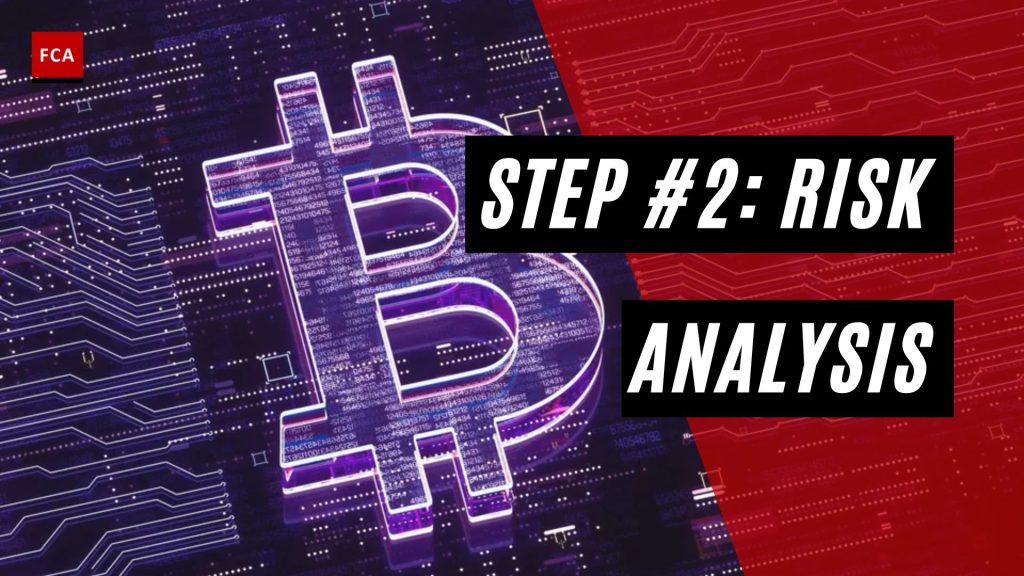In the realm of cryptocurrency investments, risk analysis stands as the pivotal second step towards effective risk management. This crucial phase entails a thorough examination and evaluation of identified risks to ascertain their potential impact on organizations and the likelihood of their occurrence. The overarching objective of this step is to prioritize the identified risks and devise suitable strategies for mitigating them.
Key Factors for Comprehensive Risk Analysis
To conduct a comprehensive risk analysis, financial institutions must take into account several critical factors:
- Likelihood of Occurrence: Determining the likelihood of a risk materializing involves assessing the probability of its occurrence in the future. This assessment can be conducted by analyzing historical data, current market trends, and expert opinions. A holistic approach to evaluating risk probabilities is essential for informed decision-making.
- Impact on the Organization: The impact of a risk on an organization refers to the potential consequences it may entail if it were to transpire. Such consequences could encompass financial losses, reputational damage, or legal and regulatory penalties. A thorough understanding of the potential impact enables organizations to prepare and implement suitable risk mitigation measures.

- Interdependencies: The interconnected nature of risks necessitates considering the potential for one risk to trigger or exacerbate another. Evaluating these interdependencies is crucial when developing risk mitigation strategies. A comprehensive approach should encompass the identification and assessment of such linkages between risks.
- Risk Tolerance: Risk tolerance denotes the level of risk that an organization is willing to accept. This factor varies depending on an organization’s goals, financial resources, and regulatory requirements. Understanding risk tolerance is vital for aligning risk management strategies with an organization’s overall risk appetite.
Risks Associated with Cryptocurrency Investments
To illustrate the risk analysis process, let’s consider an example of risks associated with investing in cryptocurrencies:
- Market Volatility: The likelihood of market volatility is high due to the historical instability of cryptocurrencies. If the value of the cryptocurrencies in an institution’s portfolio experiences a sudden decline, the impact on the organization can be significant.
- Liquidity Risk: The likelihood of liquidity risk occurring is moderate, as liquidity levels can vary based on specific cryptocurrencies and market conditions. Sudden spikes in demand for liquidity could diminish the value of an institution’s portfolio, resulting in substantial impact.
- Cybersecurity Risk: Given the increasing frequency and sophistication of cyberattacks targeting cryptocurrencies, the likelihood of cybersecurity risk occurring is high. A security breach resulting in the loss of cryptocurrencies could have a considerable impact on the organization.
- Regulatory Risk: The rapidly evolving regulatory environment for cryptocurrencies increases the likelihood of regulatory risk. If new regulations are introduced that restrict an institution’s ability to invest in cryptocurrencies, the impact on the organization could be substantial.
- Operational Risk: The likelihood of operational risk occurring is moderate, contingent on the specific service providers and exchanges utilized by the institution. System failures, human errors, or fraud resulting in the loss of cryptocurrencies could have a significant impact on the organization.

Developing Risk Mitigation Strategies
Based on a comprehensive analysis of the identified risks, financial institutions can prioritize them and formulate appropriate risk mitigation strategies. For instance, diversifying the portfolio of cryptocurrencies can help mitigate the impact of market volatility. Implementing robust cybersecurity measures can reduce the likelihood of security breaches. Each risk requires a tailored approach to mitigation.
Final Thoughts
Risk analysis assumes a critical role in the realm of cryptocurrency risk management. By meticulously analyzing and evaluating identified risks, financial institutions can prioritize them and develop appropriate risk mitigation strategies. The utilization of historical data, current trends, and expert opinions ensures that the risk analysis conducted is comprehensive, accurate, and enables the protection of investments from potential losses.








